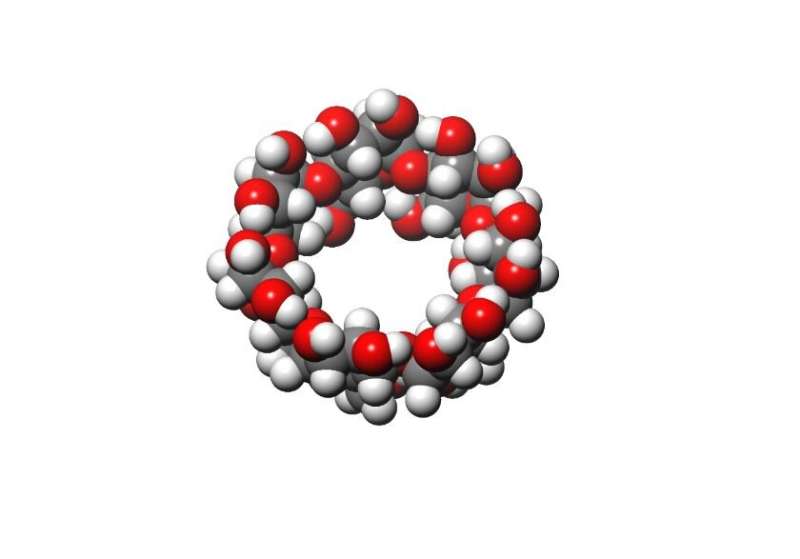One-molecule-thick coating to help improve disease and drug testing

A new breakthrough has the potential to improve sensors used to test for diseases and detect doping in sports.
An international research team led by scientists from Lancaster University have created a coating only one molecule thick that modifies the surface of sensor electrodes.
The molecule used, called beta-cyclodextrin, has a funnel shape with a hydrophobic inside and a hydrophilic outside. The combination of these two properties works together to ensure that only molecules of the correct size and type will fit inside—thus ensuring the sensor only detects substances it is tuned for.
The process, which involves electrochemically grafting the beta-cyclodextrin onto the surface of graphite electrodes, is also easy to apply—it can be added in one simple step within minutes, without any special equipment or harmful chemicals—something the researchers believe makes the process cheap and scalable.
Although the use of cyclodextrin on sensors is not new, other methods to create similar sensor coatings have been, up until now, more complex and expensive. Tests showed this new method also produces sensors around ten times more sensitive than the best existing sensors based on cyclodextrin. This means that it has the potential to detect specific molecules at much lower concentrations.
Dr. Stijn Mertens, Senior Lecturer in Electrochemical Surface Science at Lancaster University's Department of Chemistry, and lead researcher, said: "This one-step modification holds substantial promise for the routine production of inexpensive, yet robust and high-performing electrochemical sensors.
"It is very selective, only picking up molecules that fit within the cyclodextrin. This is important because it means we can analyse samples without time-consuming and therefore expensive pre-treatment, such as separation from other substances. We believe that the excellent performance of the sensor may be related to its simple and well-defined structure, as the cyclodextrin is attached directly and strongly to the electrode surface."
The researchers tested the sensor on dopamine—a neurotransmitter chemical that helps to send signals between nerve cells and is therefore very important in biochemistry.
"Even though we only tested it on dopamine as a biologically relevant molecule, we expect that the sensor will work for many other small biomolecules, or drugs. This could prove useful in helping to diagnose diseases, such as Parkinson's, or detecting drugs in athletes."
The research is currently at an early proof-of-concept stage, though sensors with these coatings have the potential to be used by scientists within labs to test blood or tissue samples.
The research is outlined in the paper 'One-Step Covalent Immobilization of beta-Cyclodextrin on sp2 Carbon Surfaces for Selective Trace Amount Probing of Guests', which is published in the journal Advanced Functional Materials.
The research, which also involved researchers from KU Leuven and Ghent University in Belgium, was funded by the Fund Scientific Research-Flanders, KU Leuven and the European Research Council.
More information: Zhi Li et al, One‐Step Covalent Immobilization of β‐Cyclodextrin on sp 2 Carbon Surfaces for Selective Trace Amount Probing of Guests, Advanced Functional Materials (2019). DOI: 10.1002/adfm.201901488
Journal information: Advanced Functional Materials
Provided by Lancaster University





















